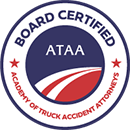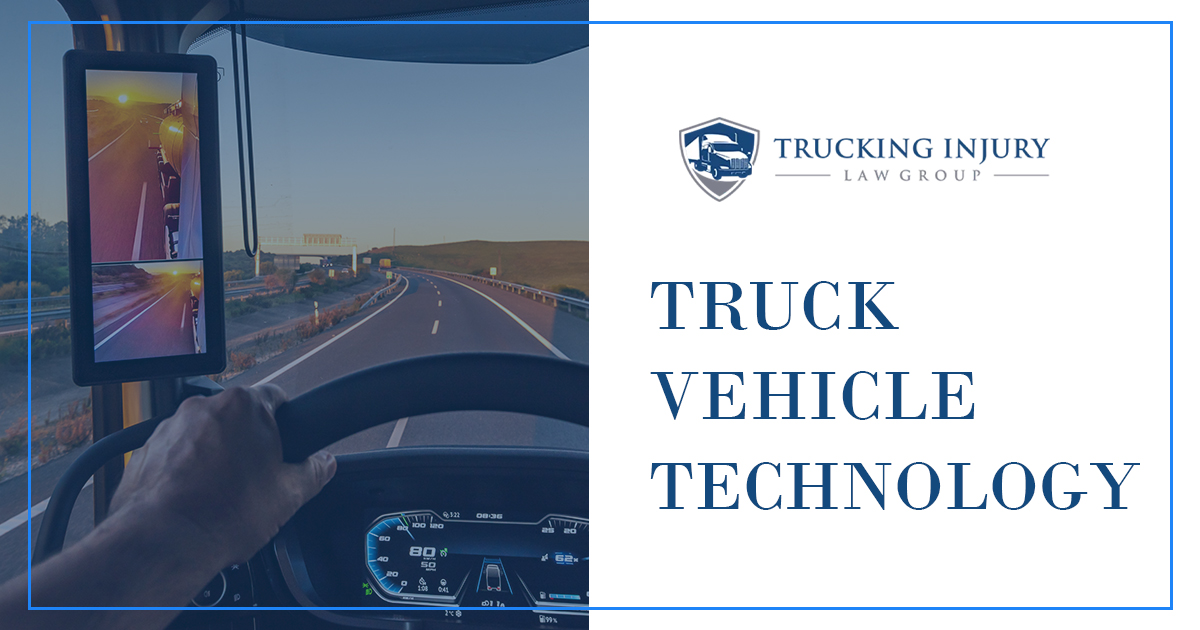Truck Vehicle Technology
Today’s trucks use a system of devices and components to keep them operating on the road. From emergency braking systems to fleet management devices, these components help make trucks more efficient and safer on the road.
Unfortunately, even with the best technology, crashes involving trucks still occur. According to the latest data from the Federal Motor Carrier Safety Administration, 154,993 individuals suffered injuries in traffic accidents involving large trucks.
However, with their implementation and correct usage, they can help to prevent many accidents on America’s roadways and highways.
At Trucking Injury Law Group, we want all our clients to be informed of the latest truck vehicle technology. Here is a look at the different types of truck vehicle technology on the road.
The Engine and Power Systems
Diesel engines are the powerhouse of most commercial trucks. Over the years, they have seen major advancements in their design and operation. One advancement is the common rail fuel injection system. This uses high pressure to deliver fuel with precision, resulting in better combustion and reduced emissions.
Another key technology is turbocharging. This system compresses air before it enters the cylinders. In turn, that leads to more power and better fuel economy.
Exhaust after-treatment technologies are also making an impact on reducing harmful emissions. Particulate filters and selective catalytic reduction (SCR) systems can reduce the environmental impact of diesel engines.
Along with that, there is a growing interest in using alternative fuels, such as biodiesel and synthetic fuels. Biodiesel is derived from renewable sources, making it an environmentally friendly alternative to traditional diesel fuel. Synthetic fuels are also being explored as a cleaner combustion option.
Safety Features
All trucks have safety features that can assist drivers on the road and prevent accidents. Some of these technologies include:
Collision Avoidance Systems
These systems are designed to assist drivers in avoiding potential crashes. There are various types of systems available in modern vehicles.
Automatic Emergency Brakes (AEB) detect potential collisions. If the driver doesn’t react in time, the brakes are automatically applied. AEB calculates the distance between the two vehicles. A warning is sent to the driver if there is an imminent collision. If they do not respond, the brakes are applied. These AEBs can be useful in preventing rear-end crashes.
On the other hand, a Forward Collision Warning (FCW) alerts the driver when the truck approaches another vehicle too quickly. Once that occurs, a warning is sent to the driver, who can then have enough time to react and avoid a collision.
By adjusting the truck’s speed automatically, Adaptive Cruise Control (ACC) helps drivers maintain a safe following distance from the vehicle ahead. Its sensors detect the speed and distance of the vehicle in front of the truck. In turn, it adjusts the speed of the vehicle to maintain a safe distance.
Lane Departure Warning Systems (LDWS)
LDWS monitors the lane markings on the road and alerts the driver if the truck drifts out of its lane. If that happens, the driver might have visual, audible, or haptic warnings in the cabin. These systems help long-distance truck drivers who may experience fatigue or distraction during extended periods of driving. By providing an early warning, they can take corrective action before an accident occurs.
Blind Spot Detection
Large trucks have bigger blind spots than cars and other smaller vehicles. To help minimize the risk of accidents caused by these blind spots, blind spot detection systems have been developed. These systems use sensors to monitor the adjacent lanes and warn the driver if another vehicle is located in those no-zones.
Stability Control Systems
These components help drivers maintain control and prevent accidents. One of the most common types of stability control systems is Electronic Stability Control (ESC). ESC is designed to prevent rollovers and skidding by adjusting the braking and engine power to maintain stability during sudden maneuvers. When the sensors detect the vehicle is losing traction or stability, they apply the brakes or reduce engine power to prevent loss of control.
Another type is Roll Stability Control (RSC). This technology can prevent rollovers by adjusting the brakes of individual wheels to counteract tipping forces. When the vehicle is in danger of tipping over, it can apply the brakes to keep it stable.
Driver Monitoring Systems (DMS)
Monitoring the components of a truck is not the only system in a vehicle. Some cameras and sensors can keep an eye on the driver’s behavior while behind the wheel. DMS often analyzes the driver’s eyes, head, and body movements to detect signs of fatigue, drowsiness, or distraction. These systems are usually placed on the dashboard, rearview mirror, or steering column to capture the driver’s movements.
If the system detects any unusual behavior, such as the driver closing their eyes or looking away from the road for an extended period of time, it will issue an alert to the driver to stay focused.
Crosswind Stabilization
Crosswinds can cause a vehicle to sway. In the case of a tall truck, this can be especially dangerous. These stabilization systems use sensors to detect the presence and strength of crosswinds. With that information, the vehicle’s braking and steering systems can compensate for the wind forces. This helps to keep the truck stable and on course, reducing the risk of accidents caused by crosswinds.
Telematics and Fleet Management
Telematics systems combine GPS, cellular communication, and onboard sensors to provide fleet managers with real-time data. These systems allow fleet managers to monitor vehicle location, fuel consumption, driver behavior, and maintenance needs.
By tracking things like speed, acceleration, and braking, fleet managers can identify areas where drivers may need additional training or coaching. This not only helps improve safety but also reduces the risk of accidents and damage to vehicles.
Finally, telematics systems also help fleet managers monitor maintenance needs. By monitoring engine performance and tire pressure, fleet managers can identify potential issues before they become major problems.
Electronic Logging Devices (ELDs) have been mandated by the FMCSA for commercial motor vehicles to track driver hours. This technology has replaced traditional paper logbooks. It can help to improve safety and compliance by automatically recording driving time, engine hours, vehicle movement, and other data. Along with that, ELDs also prevent drivers from exceeding their maximum allowable driving time.
Sometimes, a truck will have an Event Data Recorder (EDR), which can serve the same purpose. These “black boxes” can record specific analytics and data from a set time period before a collision happens, such as:
- Vehicle speed
- Engine RPM
- Acceleration and deceleration
- Brake application
- Seatbelt usage
- Airbag deployment
- Engine parameters
- Time and date
- Diagnostic codes
- GPS data
All these truck vehicle technologies can help impact safety, accident prevention, and post-accident analysis. However, these components are only as good as a safe driver behind the wheel. In cases where the driver acted recklessly, or the trucking company failed to maintain their vehicle, accidents can occur, often leaving behind devastating consequences.
If you have been injured in a trucking accident or lost a loved one, contact us at Trucking Injury Law Group. We offer free consultations to help you determine the validity of your case. Contact us today.






